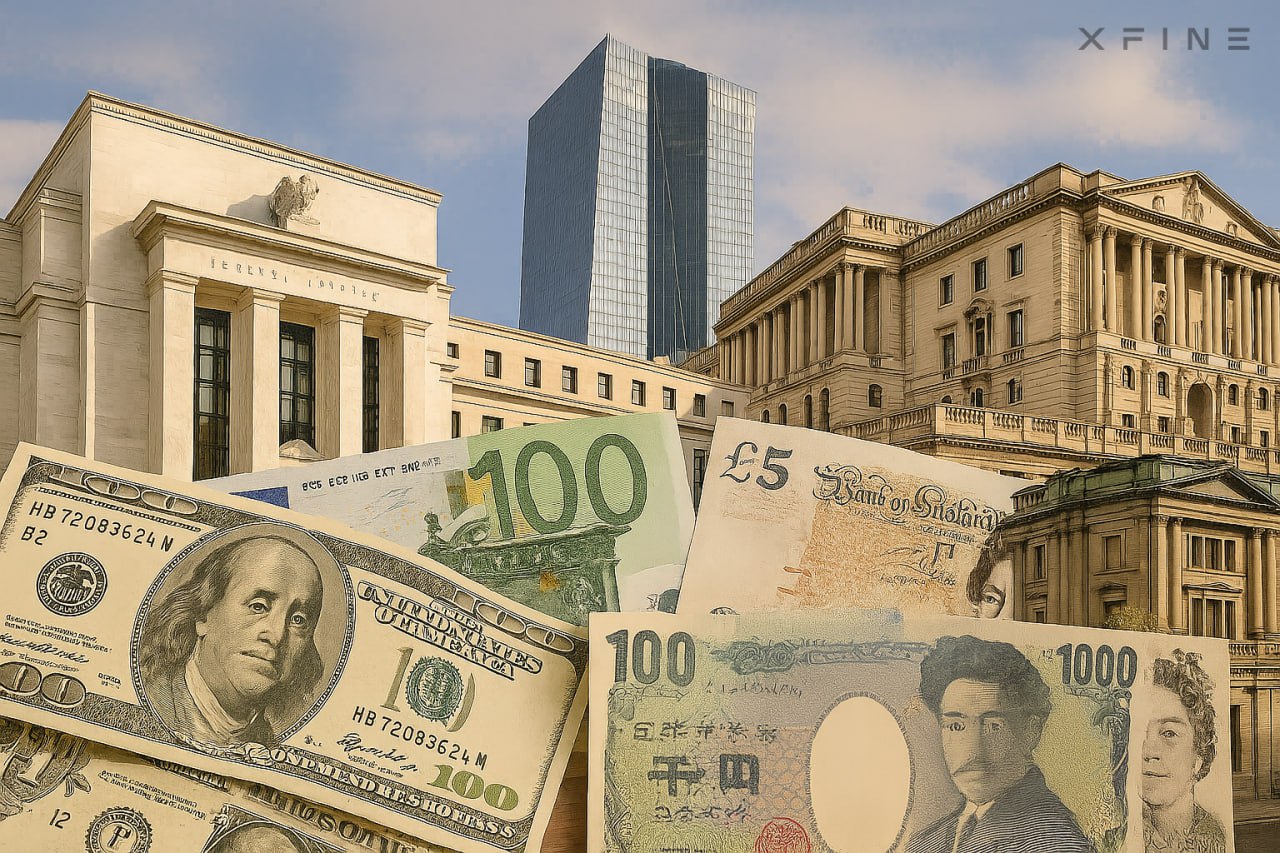
July 2025 appeared outwardly calm: the world’s major central banks left interest rates unchanged. However, XFINE analysts note that this calm is an illusion. Internal divisions, geopolitical tensions, and political pressure are fuelling uncertainty and laying the groundwork for a new wave of volatility.
The US Federal Reserve kept its key rate at 4.25-4.50%, but sharp disagreements emerged within the Federal Open Market Committee (FOMC). Three members supported an immediate rate cut, while the hawkish camp insisted on maintaining the current policy. Against this backdrop, US President Donald Trump harshly criticised Fed Chair Jerome Powell, calling him a “drag on growth” and hinting at the possibility of replacing the head of the Fed. Powell, in turn, reaffirmed the importance of the central bank’s independence, though analysts noted his remarks sounded less confident than usual.
Markets interpreted the Fed meeting outcome as a signal of continued hawkish policy: government bond yields rose, the dollar strengthened, and the probability of a rate cut in September dropped from 65% to 45-48%. The S&P 500 and Dow Jones fell slightly, while the Nasdaq posted a modest gain. Volatility remained contained, but investor caution increased.
The Bank of Japan also kept its rate unchanged at 0.50%, despite inflationary pressure and yen depreciation. The regulator pointed to rising wages and steady domestic demand. The USD/JPY pair neared the 150 level, boosting expectations of a possible currency intervention.
On 24 July, the European Central Bank paused its rate-cutting cycle for the first time in a year, keeping rates at 2.00% and 2.15%. Christine Lagarde announced a shift to a “wait-and-watch” approach. Markets took into account the 15% tariff agreement between the EU and the US and revised their expectations for further easing – the probability of a September rate cut is now estimated at 20–30%.
The Bank of England, which last met on 19 June, also kept its rate at 4.25% and maintains a hawkish tone. Key risks include rising wages and persistent inflation in the services sector. Household debt is growing, and the pound’s resilience may weaken if macroeconomic data worsens. The next policy decision is scheduled for 7 August.
According to XFINE, despite the lack of formal changes, July marked a shift toward a new phase of instability. Economic models are giving way to political signals, and traders should focus on short-term strategies and macroeconomic data. Particular attention should be paid to EUR/USD, GBP/USD, and USD/JPY pairs, as well as bond and precious metals markets. In this environment, survival belongs not to the boldest, but to those most adaptable.